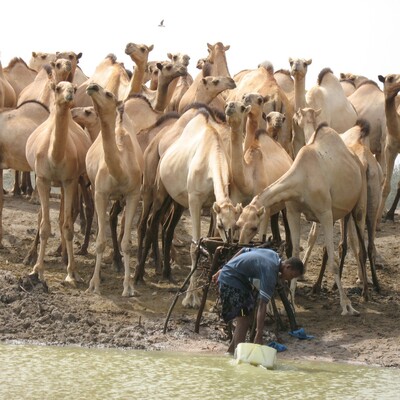
Agronomic evaluation of unacidulated and partially acidulated Minjingu and Chilembwe phosphate rocks for clover production in Ethiopia
Abstract
Most soils in sub-Saharan Africa are P deficient, but the high cost of water-soluble P fertilizers limits the use of P fertilizers by resource-poor farmers. A low-cost alternative is to apply phosphate rocks. We evaluated the effectiveness of unacidulated (PR), 25 percent partially acidulated (PAPR25), and 50 percent partially acidulated (PAPR50) Minjingu and Chilembwe phosphate rocks relative to triple superphosphate (TSP) on Trifolium quartinianum grown on a Vertisol in the Ethiopian highlands. The fertilizers were applied once at 0-80 kg P ha-1 and their effects were followed in four consecutive clover crops. In the Minjingu phosphate rock experiment, clover DM yields without applied P were below 1 t DM ha-1 in all except the first of four consecutive crops. With P application, herbage yields reached as high as 14 t ha-1. Significat (P<0.05) effects of P on clover DM and P uptake were observed at least up to crop 3. Over all the four crops. PR was 114 percent. PAPR25 was 113 percent and PAPR50 was 107 percent as effective as TSP in increasing clover herbage yields. The corresponding relative responses in P uptake were: 128, 121 and 112 percent for PR.PAPR25 and PAPR50 respectively. The substitution rates in herbage yields were: 130 percent for PR.128 percent for PAPR25 and 114 percent for PAPR50 while those for P uptake were 164 percent PR.146 percent for PAPR25 and 125 percent for PAPR50. In the Chilembwe phosphate rock experiment, clover DM yields without applied P were below 1.3 t DM ha-1 in the five years of the study. With P application, herbage yields reached as high as 7 t ha-1. Significant effects of P on clover DM and P uptake were observed only in the first two crops. Over all the five crops, PR was 27 percent, PAPR25 was 57 percent and PAPR50 was 73 percent as effective as TSP in increasing clover herbage yields. The corresponding relative responses in P uptake were 18.49 and 59 percent for PR.PAPR25 and PAPR50, respectively. The substitution rates in herbage yields were 7 percent for PR.32 percent for PAPR25 and 53 percent for PAPR50 while those for P uptake were 3 percent for PR.24 percent for PAPR25 and 35 percent for PAPR50. It was concluded that raw Minjingu phosphate rock is highly effective on clover in these Vertisols and partial acidulation is not necessary, but raw Chilembwe phosphate rock is ineffective and 50 percent partial acidulation is recommended.
Citation
European Journal of Agronomy;10: 37-47










